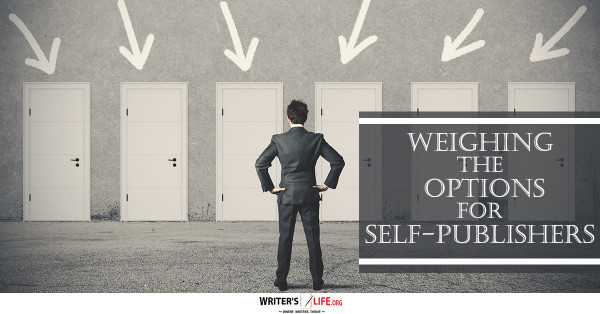- How To Tackle Jealousy In Creative Writing
- Common Submission Mistakes
- How To Stop Your Blog Becoming Boring
- The One Thing Every Successful Writer Has In Common
- How To Make Yourself Aware Of Publishing Scams
- Why Almost ALL Writers Make These Grammar Mistakes At Some Point
- 5 Tips For Authors On How To Deal With Rejection
- Top Mistakes to Avoid When Writing a Novel
- How to Avoid Common New Writer Mistakes
- 10 Mistakes New Fiction Writers Make
Weighing The Options For Self-Publishers

There’s no doubt about it.
We are living in golden age for writers, when self-publishing has become a realistic and respected route for writers to get their work into the hands of readers. But, as in most endeavors, the opportunities tend to come hand in hand with at least a few challenges thrown in as well.
For the self-publishing author, that means taking on a new and maybe daunting role that couldn’t be more different from the role of writer. All of a sudden, you need to transition from creative genius to pragmatic business person, and that’s not always an easy step to take.
That’s true enough for many writers even in the world of traditional, commercial publishing, when plots and characterization and word choice give way to contracts, production cycles, and self-promotion. It’s that much worse for self-publishers, who can feel lost at sea when they need to become instant experts in everything from book design to marketing to accounting and more.
The good news is that along with the emergence of the new technologies that make self-publishing both feasible and attractive there has been an explosion in resources to help with every step in the process. The bad news, if that’s what it is, is that the very wealth of choices can be overwhelming.
With a little discipline and planning, though, it really doesn’t have to be. Once you are familiar with all the options available for everything from editing to design and printing to marketing, you can apply a simple business principle to help you make the big decisions that lie ahead: ask yourself at every step not only how much it will cost, but also how many copies of the book you will need to sell to pay for it. Then you can make a reasoned business decision and stick to a realistic budget, just like a commercial publisher would.
Will a low-cost cover design do the work of selling your book, or does it make more sense to hire a top-shelf designer? Do you just need a copy edit to whip the book into shape, or should you be working with a seasoned development editor? The answer will be different for each author and each project, but looking for it through the eyes of a publisher can lead you to the right one.
Of course, it is tempting to pull out all the stops and spare no expense in turning your manuscript into a finished book, but that’s the author in you speaking. You the publisher will have a different idea. For that part of you, the book is a product for the marketplace and the numbers have to count.
The trick is to take off your writer’s hat and replace it with a bean-counter’s green eyeshade. As much as you love your book, as much as it’s become a part of you, as a publisher you have a different job to do and need a different perspective--if your goal is to get a return on your investment, in any case.





























